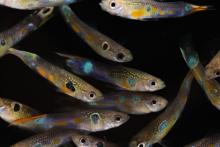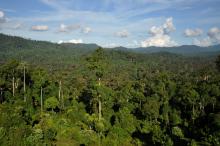Interactive teaching methods significantly improved attendance and doubled both engagement and learning in a large physics class, according to a University of British Columbia study published today in Science.
Led by Louis Deslauriers, a post-doctoral researcher at UBC’s Carl Wieman Science Education Initiative (CWSEI), the study compared the amount of learning students experienced when taught – in three hours over one week – by traditional lecture and by using interactive activities based on research in cognitive psychology and physics education.
The research team found that students in the interactive class were nearly twice as engaged as their counterparts in the traditional class. Students from the experimental class uniformly scored nearly twice as well in a test designed to determine their grasp of complex physics concepts (average score 74 per cent vs. 41 per cent, with random guessing producing a score of 23 per cent). Attendance in the interactive class also increased by 20 per cent during the experiment.
“There is overwhelming evidence that teaching pedagogy based on cognitive psychology and education research can improve science education,” says co-author Carl Wieman. “This study further shows that we can achieve individual attention without individual interaction, and that even in a large class, the positive effects of a tutor or apprenticeship model can be achieved by using evidence-based teaching methods.”
Wieman is Associate Director for Science of the White House Office of Science and Technology Policy. He was involved with the study last year before going on leave from UBC and the University of Colorado at Boulder (CU).
“In addition to the objective measurements of engagement, attendance and test scores, we also surveyed students and found that these teaching methods generated a lot of excitement in class – which makes for a great learning environment,” says Deslauriers, lead author of the study.
In the study, two classes of an undergraduate physics course with approximately 270 students each were taught by highly-rated, professors with decades of experience. In the second-to-last week of the second semester, the instructor of one of the classes was replaced by Deslauriers and Ellen Schelew, a master’s student in the Department of Physics at UBC. Deslauriers and Schelew had been trained by Wieman and other CWSEI researchers in interactive, evidence-based teaching methods but otherwise had little teaching experience beyond serving as teaching assistants.
During the experimental week, Deslauriers and Schelew gave no formal lecturing but guided students through a series of activities that had previously been shown to enhance learning, such as paired and small-group discussions and active learning tasks, which included the use of remote-control “clickers” to provide feedback for in-class questions. Pre-class reading assignments and quizzes were also given to ensure students were prepared to discuss course material upon arrival in class.
“These activities require more work from the students, but the students report that they feel they are learning more and are more vested in their own learning,” says co-author Schelew.
“This study is designed specifically to gauge the impact of interactive teaching methods in a large undergraduate physics class, and the results present a very ‘clean’ comparison to the traditional lecture method,” says Wieman.
Since 2007, more than 20,000 UBC students have been affected by the CWSEI through the transformation of courses. More than 50 courses in seven departments in the Faculty of Science are undergoing or have finished transformation. The work has attracted international attention and support, including a $2-million gift from Google’s founding investor and UBC alumnus David Cheriton in 2010. For more information on the CWSEI, visit http://www.cwsei.ubc.ca/.
At the University of Colorado at Boulder, the Science Education Initiative (CU-SEI) has helped incorporate research-based teaching practices into more than 55 courses in five science departments. For more information on CU-SEI, visit http://www.colorado.edu/sei/.
Musqueam First Nation land acknowledegement
We honour xwməθkwəy̓ əm (Musqueam) on whose ancestral, unceded territory UBC Vancouver is situated. UBC Science is committed to building meaningful relationships with Indigenous peoples so we can advance Reconciliation and ensure traditional ways of knowing enrich our teaching and research.
Learn more: Musqueam First Nation
Faculty of Science
Office of the Dean, Earth Sciences Building2178–2207 Main Mall
Vancouver, BC Canada
V6T 1Z4


